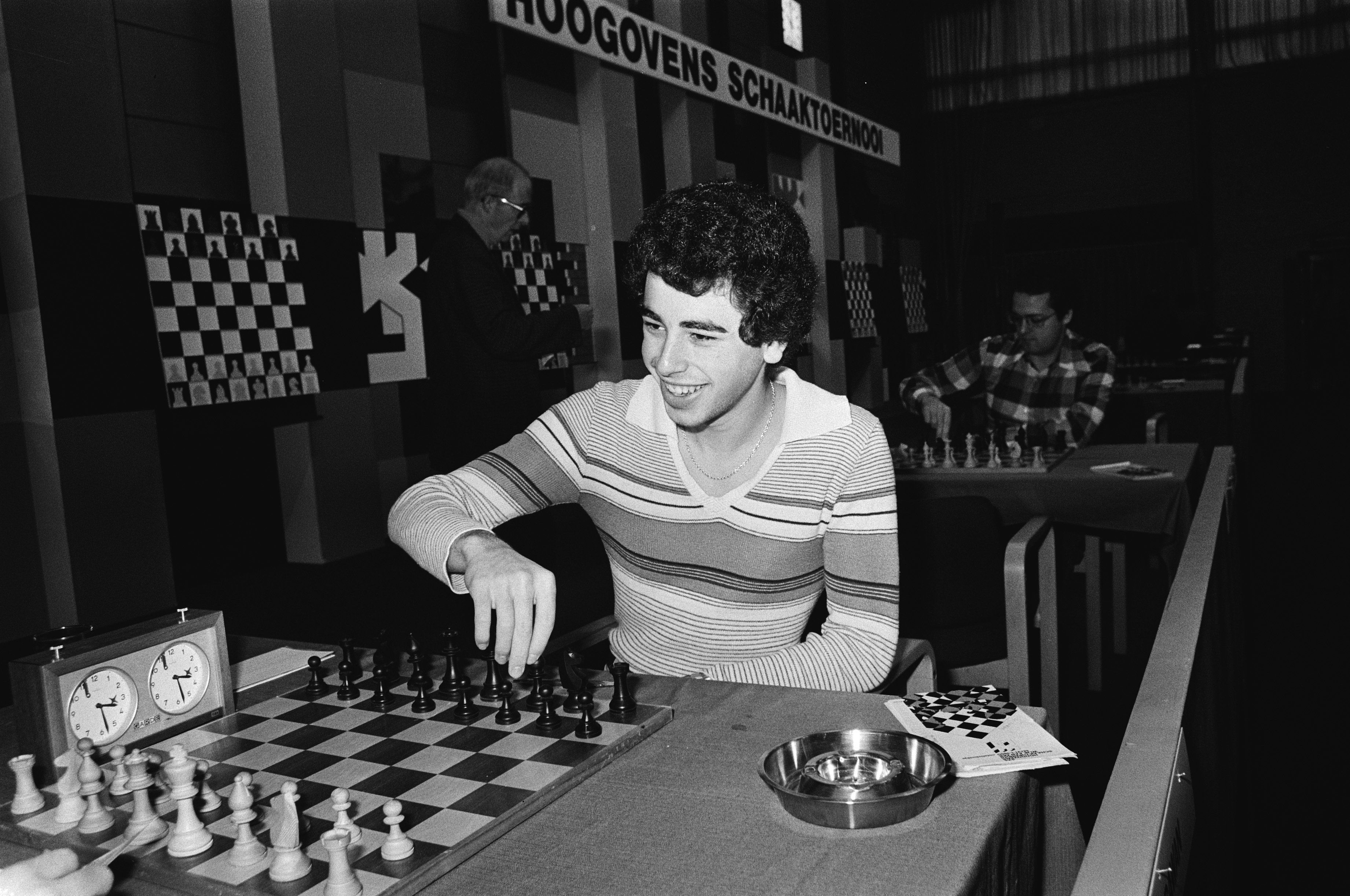GM Yasser Seirawan

Bio
GM Yasser Seirawan is a four-time chess champion of the United States and one of the most popular chess commentators today. Despite learning chess relatively late, age 12, Seirawan became one of the world’s best players in his 20s during the 1980s. He is one of the few players to defeat both GMs Anatoly Karpov and Garry Kasparov while they were world champions.
- Early Life And Career
- Entering Prime Years (1979-85)
- Championship Candidate (1985-90)
- Beyond 1990
- Author, Ambassador, Commentator
Early Life And Career
Seirawan was born to a Syrian father and English mother in the Syrian capital city of Damascus on March 24, 1960. Seirawan writes about his early life in Syria in Chess Duels, a 2010 book mainly about his games against world champions. In 1964, his family left Syria to move to England, and in 1967 they moved to Seattle, Washington, in the United States. After bouncing around to California, Texas, and Virginia, he was back in Seattle in 1972.
It was only then that Seirawan even learned how to play chess. The year, 1972, was the biggest in U.S. chess history to that point and may still be, as GM Bobby Fischer became world champion on September 1. Seirawan was 12 years of age, rather old for someone who was to become a top grandmaster, as he writes on his Chess.com member page, GMYaz (and elsewhere). But within just a year, Seirawan had won the Washington state junior championship, and within three had defeated his first grandmaster, Arthur Bisguier, at the 1975 U.S. Open.
Entering Prime Years (1978-85)
Seirawan’s continued to develop his chess career at a torrid pace. By 1978, he wasn’t just the strongest junior player in his state, he was the strongest in his country, winning the U.S. Junior Championship. And by 1979, he wasn’t just the strongest junior player in the country, he was the strongest in the world. At the World Junior Championship in Skien, Norway, he scored 10/13, winning eight games against a single loss, and won by a half-point over now-GM Alexander Chernin, who became a GM in 1985. Seirawan earned the title much sooner.

Skien was Seirawan’s second GM norm, and he earned his final one at the 1980 Wijk aan Zee tournament, then sponsored by Koninklijke Hoogovens. He again scored 10/13, this time tying for first with GM Walter Browne. One of Seirawan’s seven wins came against third-place finisher GM Viktor Korchnoi, impressing Korchnoi so much that Seirawan served as one of his seconds at the 1981 World Championship against Karpov.
In 1981, in addition to helping Korchnoi at the world championship, Seirawan won his first U.S. Championship, shared with Browne, and came in second behind Korchnoi at Lone Pine.
In 1982, Seirawan played in his first Interzonal tournament, at Toluca, where he finished seventh; only the top two advanced to the Candidates. Nonetheless, ‘82 was a solid year for Seirawan, who placed third in several big events: the Chess Olympiad on the bronze-winning American team (ninth individually on the second board), Mar del Plata, and Phillips & Drew Kings.
In the latter of these tournaments, in which Seirawan had the most wins with six, he added then-world champion Karpov to his list of chess victims. In 10 years, Seirawan had gone from no chess experience to defeating the reigning world champion. It was Karpov’s only loss of the tournament, although he did finish tied with GM Ulf Andersson ahead of Seirawan.
In 1983, Seirawan had poor tournaments at Linares and Tilburg, and was inconsistent at the ultra-strong Niksic tournament. However, he added two more world champions to his victim list, both at Niksic: GMs Mikhail Tal and Boris Spassky.
The year 1984 would be another slow one in terms of major tournaments, but in 1985, Seirawan became a candidate for the world championship for the first time. He did so with a second-place finish at the Interzonal tournament in Biel, Switzerland, after scoring 11.5/17. Seirawan drew all his fellow top-six finishers while building his score with wins over seven of the bottom eight finishers.
Now Seirawan had gone from not knowing the rules of chess to a candidate for the world championship (and who had beaten the world champion in a game) in less than a decade and a half.
Championship Candidate (1985-90)
The Candidates in Montpellier, France, did not go well for Seirawan, who finished 10th in a field of 16. He did earn his second career win over Tal, however.
In 1986 Seirawan added two accomplishments to his resume: sole possession of the U.S. Championship, which he achieved with a 10.5/15 score, and a win over the reigning world champion, Kasparov, that came at the Olympiad (where the Americans finished third). These events came in very short order, the U.S. tournament concluding on November 6 and the Olympiad beginning on November 14. Kasparov, who played in five Olympiads during his championship reign (1986-88 and 1992-96) lost just two games in the event during that time, compared to 30 victories. (The other loss was to GM Veselin Topalov in 1994.)
Seirawan would repeat as a candidate by finishing third at the Zagreb Interzonal in 1987, but his Candidates tournament appearance was a one-round exit against eventual semifinalist GM Jon Speelman.

In 1989 came Seirawan’s third U.S. championship, this one shared with GM Roman Dzindzichashvili and IM Stuart Rachels. He then played a third consecutive Interzonal in 1990, finishing 18th and missing the Candidates. It was the cycle where the world championship became split, and by the time it reunited, Seirawan was largely retired as a competitive player.
Beyond 1990
Seirawan remained an extremely strong GM into the 1990s, winning perhaps the finest game of his career in 1990 against GM Jan Timman. It was part of a six-game match that Seirawan won 3-1 with two draws, no small feat against FIDE’s 1993 world championship runner-up. In 1990 Seirawan was also the first board for the silver-winning U.S. Olympiad team.
Seirawan participated in FIDE’s Interzonal that year as well and finished just 23rd but added Smyslov to his list of world champions defeated (albeit this one 35 years after his opponent’s reign).
Seirawan won his fourth and final U.S. Championship in 2000 (as in 1989, a three-way tie) and played his final Olympiad in 2002.
Author, Ambassador, and Commentator
Seirawan continued to play competitively throughout the 1990s but began showing interest in other chess endeavors. He was the longtime editor of Inside Chess magazine from 1988-2000. He co-wrote books in the early 1990s on the Kasparov-Karpov match of 1990 and the Fischer-Spassky match of 1992 as well as one on double-rook sacrifices. Seirawan’s writing continued in the 2000s with the Winning Chess series, co-written with IM Jeremy Silman.
Seirawan also attempted, in 2001, to help organize the reunification of the world chess championship after its 1993 split. His 2001 proposal of matches featuring FIDE champion GM Ruslan Ponomariov, classical champion GM Vladimir Kramnik, Kasparov, and GM Peter Leko nearly occurred and set the stage for the 2004 Kramnik-Leko match and the 2006 Kramnik-Topalov match that reunited the title.

Lastly, Seirawan’s commentating career, for which he may be best known to young generations of chess players, began in earnest at the 1990 World Championship between Kasparov and Karpov. He has done countless events since, including the above 2006 championship match, on both television and the internet. His lectures at the Saint Louis Chess Club and appearances on the popular ChessBrahs streaming channel have introduced him to innumerable new fans.
As one notices throughout the story of his chess career, however, Seirawan was an extremely strong player who overcame a late start to defeat some of the best players in chess history. His surge of popularity in recent years is grounded in an impressive array of experiences and accomplishments over several decades.


